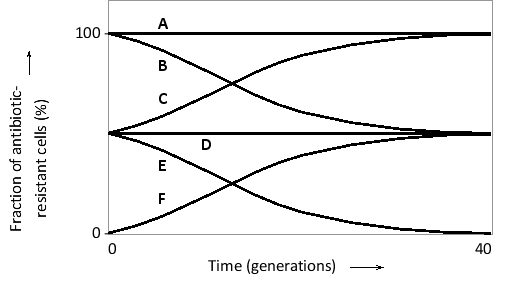Short Answer
Two haploid budding yeast cells are allowed to mate. One of them carries a mutation in its mitochondrial DNA that makes the yeast cell resistant to an antifungal drug. If the resulting diploid zygote is allowed to propagate (in the absence of the drug), how do you predict that the fraction of drug-resistant cells will change over time in the population? Choose the best curve (A to F) from the following graph. Note that the "population" is only composed of one cell at the beginning of the experiment. The curves are smoothened to cancel stochastic fluctuations that happen at such low population sizes. 
Correct Answer:

Verified
The zygote is resistant to the drug. Ho...View Answer
Unlock this answer now
Get Access to more Verified Answers free of charge
Correct Answer:
Verified
View Answer
Unlock this answer now
Get Access to more Verified Answers free of charge
Q9: Indicate whether each of the following descriptions
Q10: In the following schematic drawing of the
Q11: In addition to their respiratory function, mitochondria
Q12: Sort the following molecules to reflect the
Q13: In the following simplified diagram of the
Q15: Consider the remarkable structure of the F1Fo
Q16: Which of the following molecules can serve
Q17: The free-energy change for ATP hydrolysis to
Q18: The water-splitting step in photosynthesis …<br>A) occurs
Q19: Indicate whether each of the following descriptions